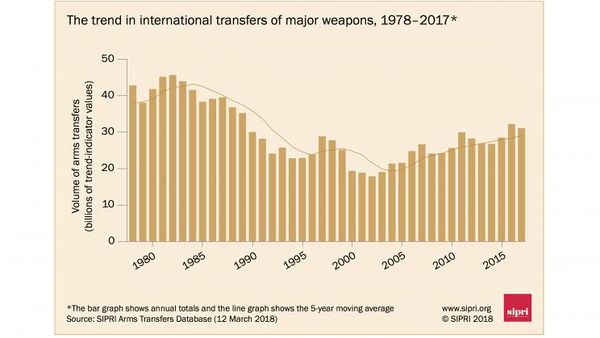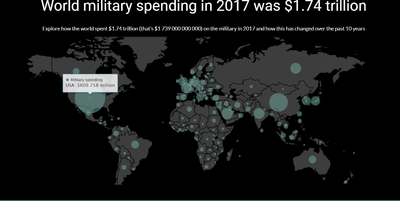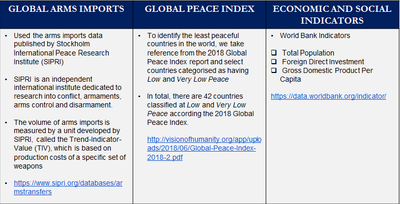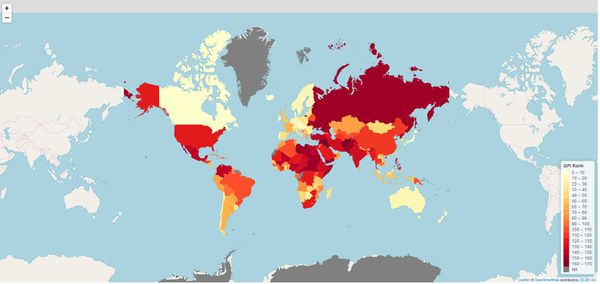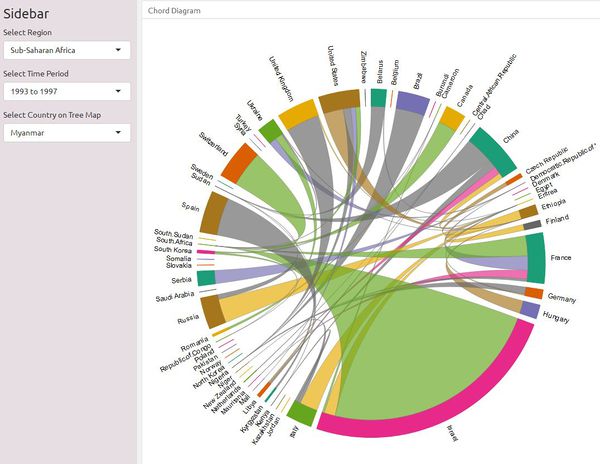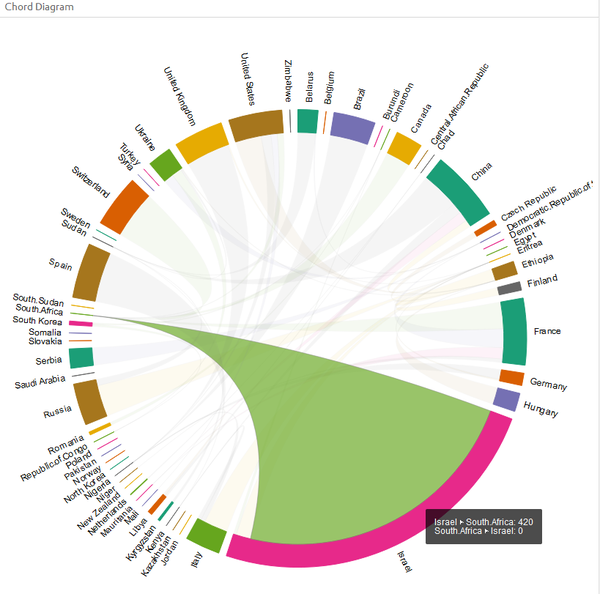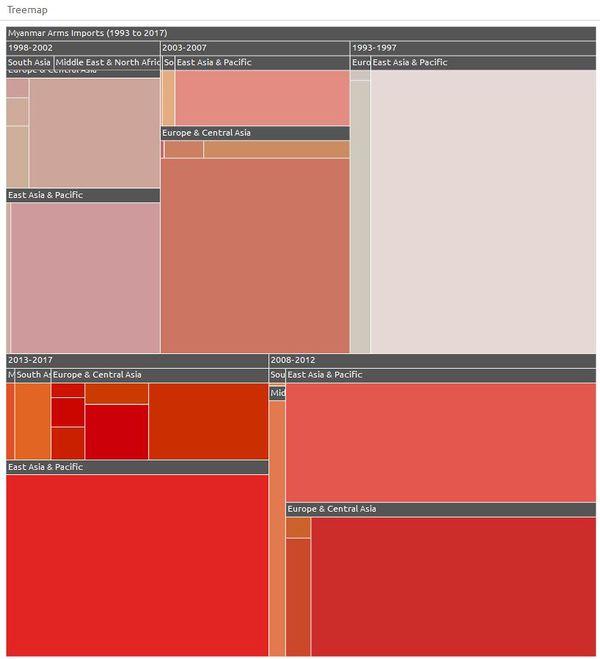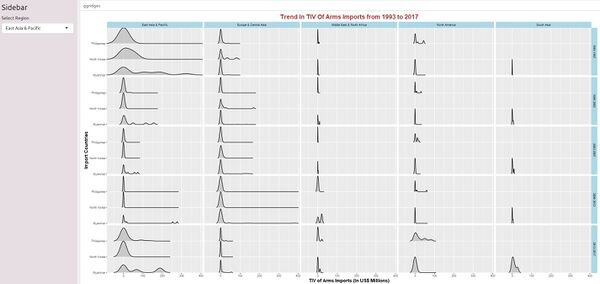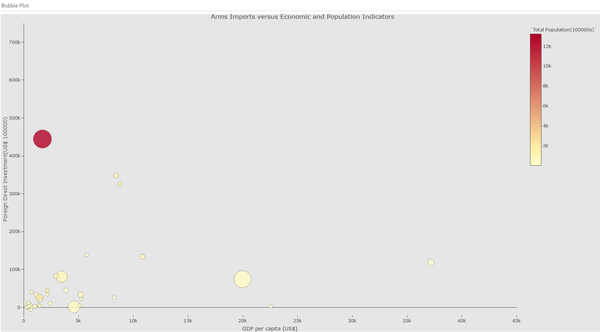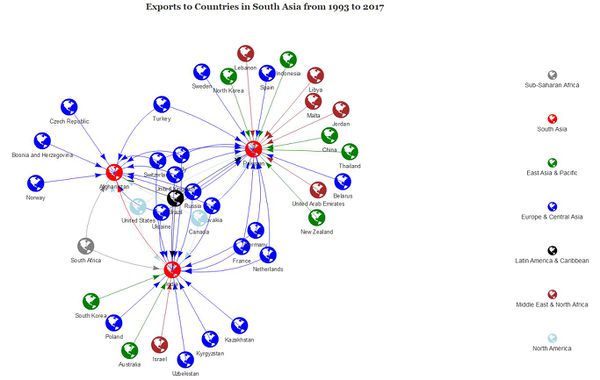Group14 Report
|
|
|
|
|
Contents
Overview
The arms trade is a global issue of concern because of its negative consequences related to armed conflict, wars, and human rights abuses [1]. It emerged as one of the main global issues in the post-Cold War era in addition to problems such as disease, poverty and gender inequality, as arms supplier countries recognized the effect of stockpiling weapon systems on the breakout of armed conflict. The Stockholm International Peace Research Institute (SIPRI) conducts research on arms transfers between regions and states aimed at increasing the fundamental understanding of the impact of arms transfers and to support policymaking. SIPRI aims to contribute to greater transparency in the global arms trade to ensure responsible international arms transfers, hence helping to prevent violent conflict, alleviate tensions and warn about potentially destabilizing arms accumulations. Based on the latest publication by SIPRI in 2017, a rising trend is observed in the volume of international transfers of major weapons, with the highest volume of arm transfers recorded between 2013 to 2017, since 1990 [1]. Research conducted by SIPRI also shows that the global arms trade industry is continuing to export weapons into for deadly armed conflicts. [2]
The lack of significant improvement in managing the global arms trade, despite implemented global policies and publication of data, prompts us to develop an alternative solution for the exploration and analysis of data published by SIPRI. Our group has developed an interactive application that allows anyone to visually explore and analyse the global arms trade. It is through this that we hope to offer an additional dimension of transparency and accountability that will invite greater scrutiny to this unabating global problem.
Trend in International Arms Transfers,1978 to 2017
|
|
Past Works
A number of applications exist for the visualization of arms trade data and most of the visualisations are mainly static. SIPRI has produced an interactive web platform using data in their published database but the application was only focused on military expenditure instead of arms trade flows (http://visuals.sipri.org/). There has also been no visualisations carried out based for countries with Low Global Peace Index ratings, as these countries are more vulnerable to import arms.
|
|
Our project aims to contribute an application featuring multiple visualizations, each providing a different aspect of exploration. The following sections describe our approach to the problem and how the application was designed and built.
Motivation and Objectives
Based on the Global Peace Index 2018 published by the Institute for Economics and Peace, we have identified the countries with 'Low' and 'Very Low Peace' global peace index ratings. [3]
Our project aims to identify the trends and patterns in the international arms transfers at the regional and country levels for these Low Peace countries and explore the arms trade dependencies of these countries for the period 1993 to 2017. We also aim to explore the major importers and exporters of arms weapons and to find out the relationships between the global arm importers and exporters. Our team is motivated to design a dynamic and interactive dashboard to provide students and policymakers a better understanding and holistic view of the global arms trade.
Through our analysis, we hope to address the following:
1) To explore the arms imports at regional and country level
2) To explore the arm trade dependencies between countries
3) Analyse the top exporters of arms
4) Explore the arms imports with the economic and population indicators
=Data Sources
The table shows the data sources for our project.
|
|
Design Frame and Demonstration
In this section, we walk through the different sections of our application and how users can explore the interactive visualizations created.
We design our application to have 6 components:
1. Visualizing the 2018 Global Peace Index,
2. Visualizing the Volume of imports for the top 100 importing countries,
3. Visualizing the arms dependencies,
4. Visualizing the trade flows over time,
5. Visualizing the relationship between arms imports, foreign direct investment and GDP per capita, and
6. Visualizing the arms trade network.
2018 Global Peace Index
In the choropleth map shown below, countries are coloured by their Global Peace Index rankings. Darker shades of red indicate a poor Global Peace ranking or countries considered to be least peaceful. Users can explore the data by hovering over each country on the map which reveals the country name and its Global Peace Index ranking.
|
|
Visualizing the Arms Dependencies
The chord diagram created to visualize trade flows is shown below.
Users can filter by region, as well as five-year time period, on the sidebar to explore the total volume of arms imports for countries in the selected region, and the supplier countries.
|
|
Hovering over a band between two countries highlights the band and reveals the volume of arms imports to the importing country from its supplier. In the example below, the tooltip shows that South Africa imports 420 arms imports (TIV millions) from Israel.
|
|
The treemap created to visualize the arms imports data in hierarchical format to show the supplier regions that make up a selected country’s imports is shown below.
|
|
Users can filter by country (one of the 42 selected countries for which we explore arms imports data) to visualize the country’s dependencies on supplier countries for arms in five-year periods from 1993 to 2017.
Clicking on a region causes the treemap to drill down to the individual countries for the selected region. Users can then identify the proportion of supplier countries that make up the arms imports for the selected importing country.
Arms Trade Flows Over Time
The ridgeline plots created to visualize changes in arms imports over time are shown below.
|
|
Users can filter by region to explore the distribution of import values for countries in the selected region over time.
With the facetted diagram, users can explore the distribution of import values for countries of the selected region by five-year time periods and by export regions. The columns of the facet grid represent export regions while the rows of facet grid represent five-year time periods. When users drill down to a particular export region, they can identify the trends in the arms import value over time, by looking across the year ranges. Similarly, users can look across a particular year range to compare the distributions of arms imports of the selected countries across the different export regions.
Relationship Between Arms Imports, FDI, GDP per capita and Population
The bubble plot created to visualize the relationship between arms imports, FDI, GDP per capita and population is shown below.
|
|
The x-axis of the bubble plot represents GDP per capita (US$), the y-axis represents foreign direct investment (US$100,000), the colour of each bubble represents total population with the darker shade of red represent large populations, and the size of the bubble represents the volume of arms imports.
Users can select different years to explore how the arms imports change with the social and economic indicators for the selected country. For example, it is be seen that for India, the arms imports appears to increase with increasing FDI.
Arms Trade Network
The network diagram created to visualize the links between the 42 countries importing countries and their suppliers is shown below.
|
|
Discussion
What has the audience learned from your work? What new insights or practices has your system enabled? A full blown user study is not expected, but informal observations of use that help evaluate your system are encouraged.
Future Work
A description of how your system could be extended or refined.
References
[1] Stockholm International Peace Research Institute. https://www.sipri.org/research/armament-and-disarmament/arms-transfers-and-military-spending/international-arms-transfers
[2] Amnesty International. https://www.amnesty.org/en/latest/campaigns/2017/09/killer-facts-the-scale-of-the-global-arms-trade/
[3] The Institute for Economics and Peace. http://visionofhumanity.org/indexes/global-peace-index/

